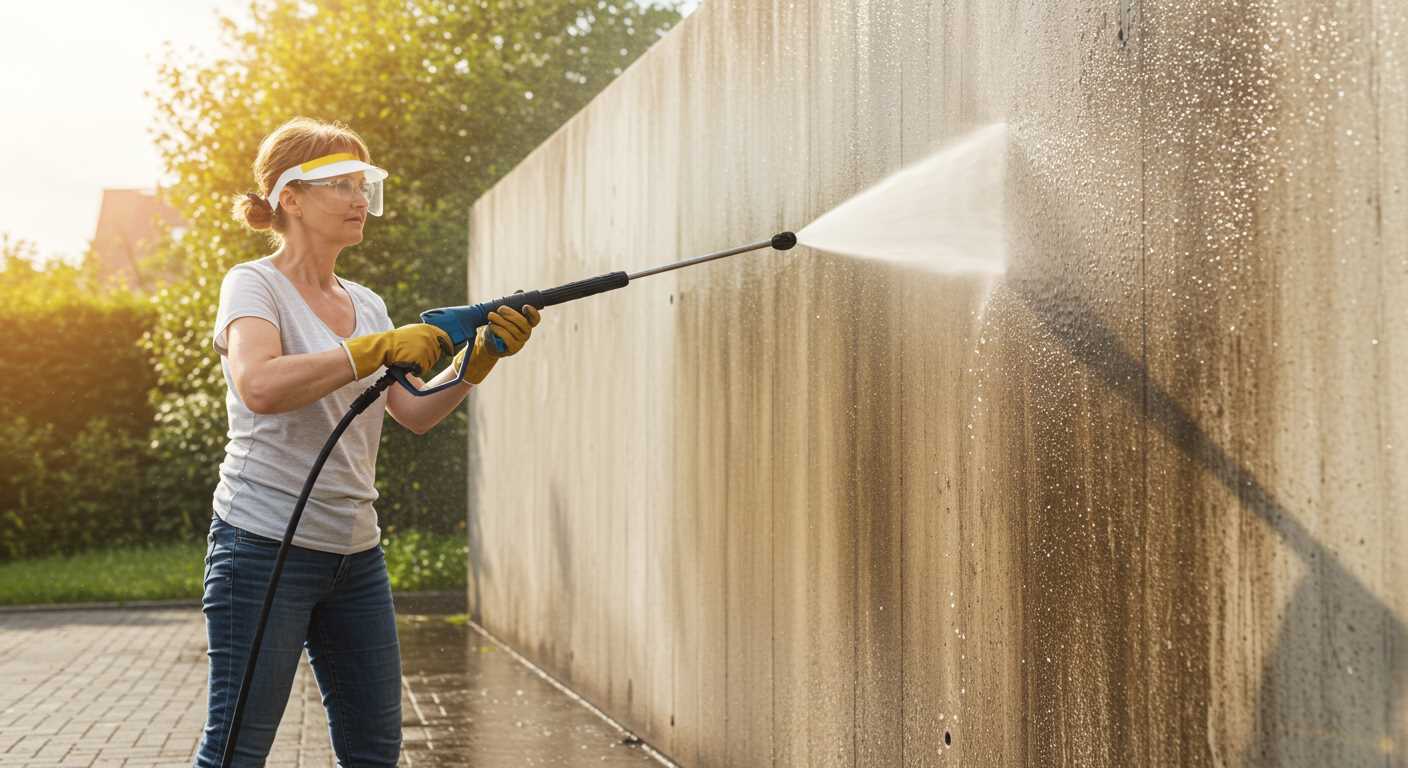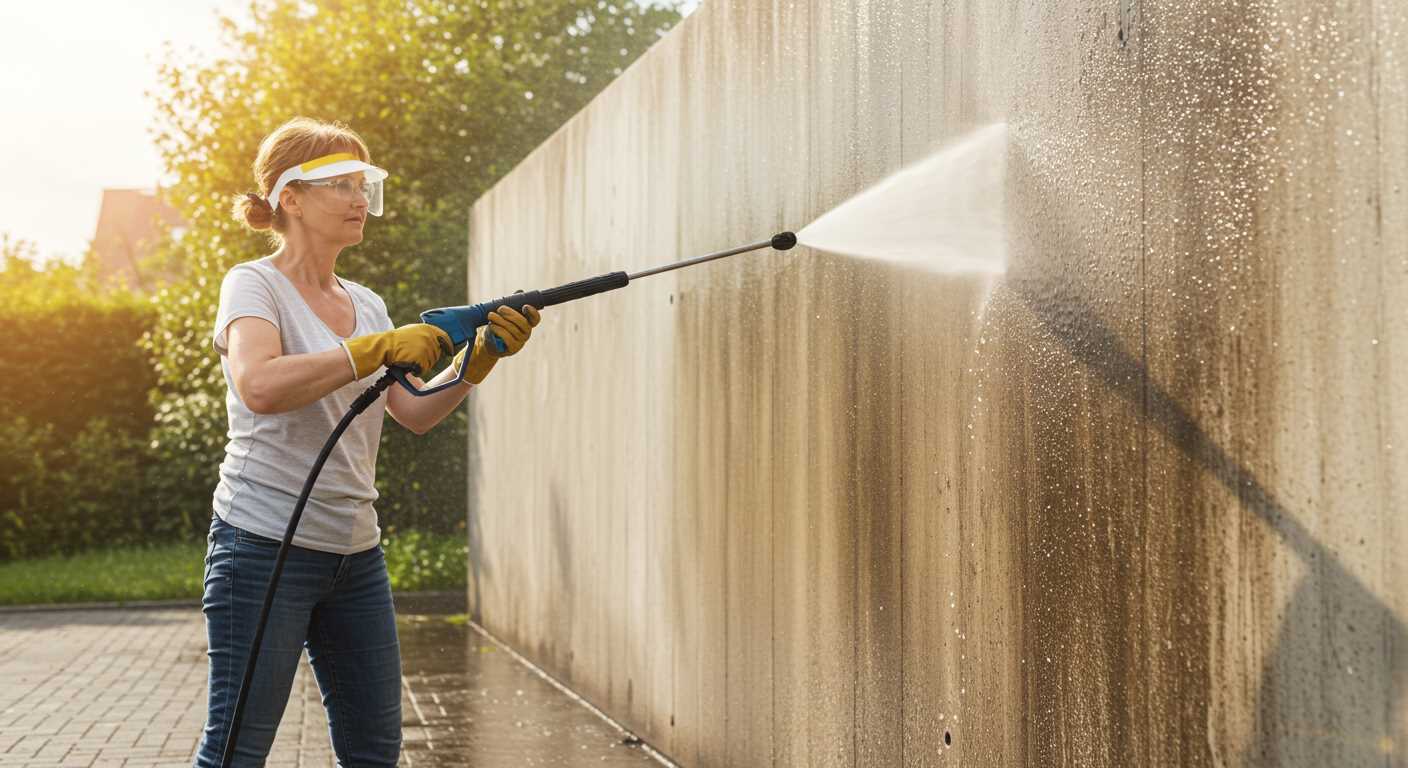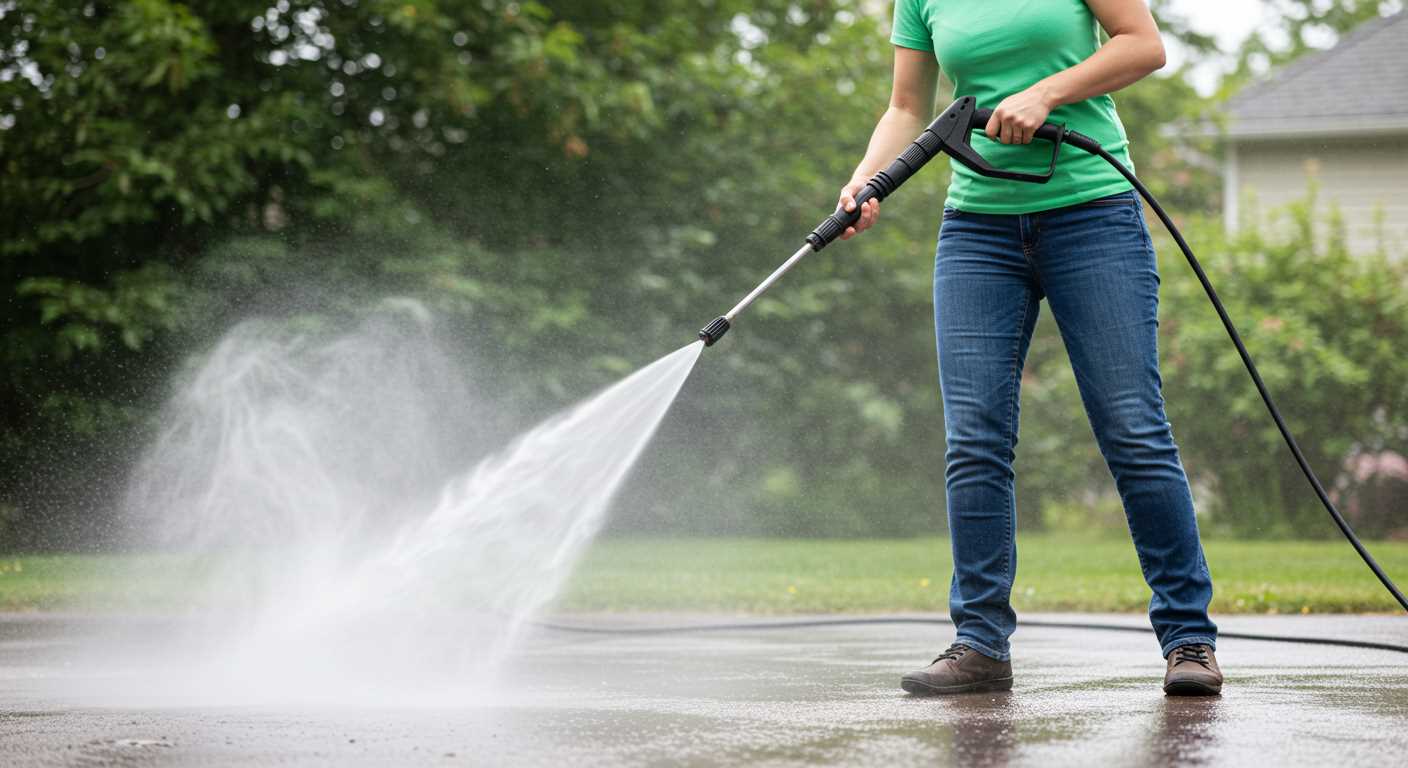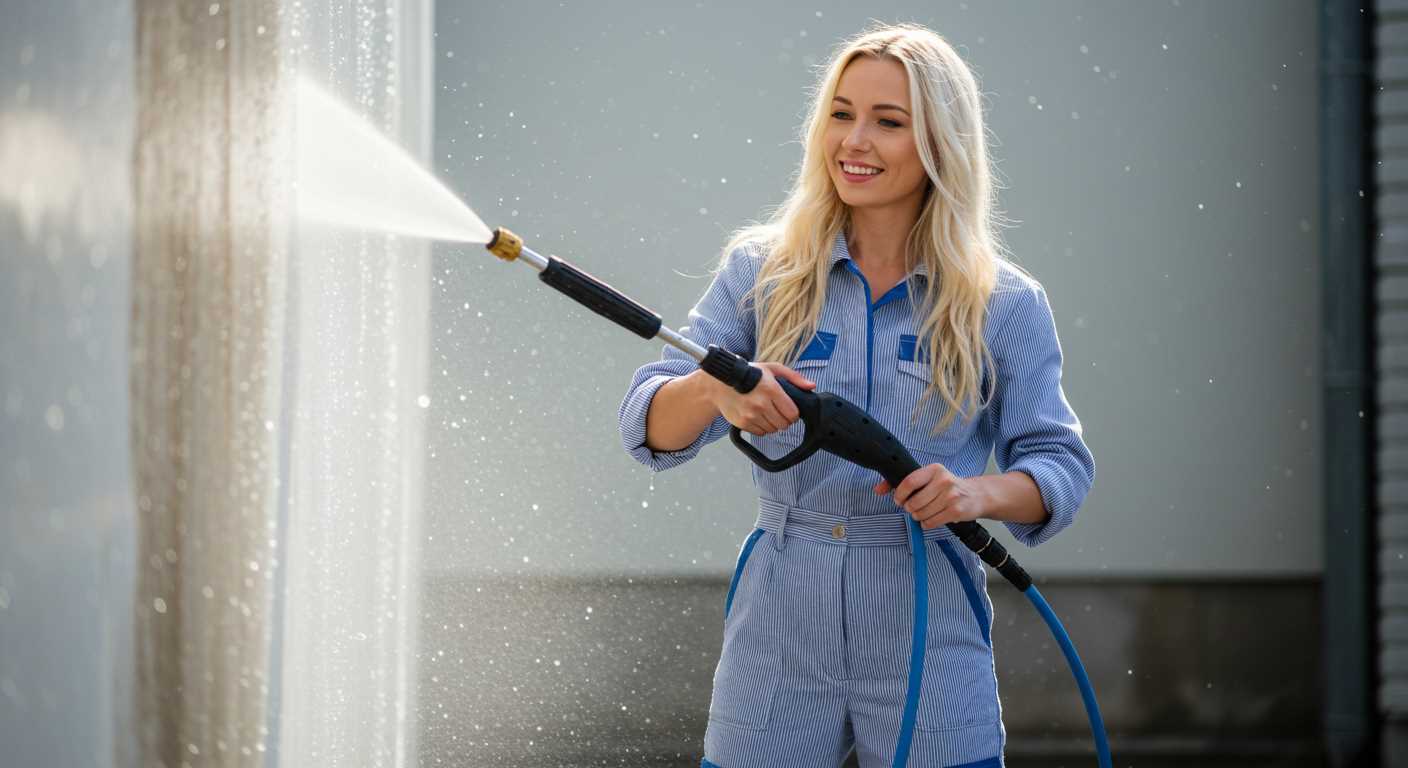


For anyone dealing with high-performance cleaning equipment, grasping the role of the control mechanism is paramount. I recall a project where a client struggled with inconsistent water flow during a crucial cleaning task. The solution lay in diagnosing the control component, which regulates the machine’s operation based on demand. Ensuring this element is functioning properly can save both time and frustration.
During my years in the industry, I’ve come across various designs and implementations of these mechanisms. They act as the brain of the operation, sensing when the trigger is engaged and subsequently managing the motor’s activity. A faulty unit can lead to erratic performance, which I witnessed firsthand when a client’s unit would start and stop unexpectedly. This not only hampers productivity but can also lead to wear and tear on the equipment.
Regular maintenance checks on this part can prevent many common issues. I often recommend inspecting the connections and ensuring that there’s no debris or water damage affecting its performance. A simple clean can sometimes restore function and extend the life of the equipment significantly. Anyone keen on maintaining their cleaning tools should prioritise this aspect of care.
Understanding the Role of the Pressure Switch in a Pressure Washer
To ensure your cleaning equipment runs smoothly, pay close attention to the component that regulates water flow and pressure. This small yet crucial device controls the pump’s operation based on the water demand from the nozzle. It detects when you squeeze the trigger and activates the pump, building up the required force for optimal performance. Once you release the trigger, it shuts off, preventing unnecessary energy consumption and wear on the motor.
Key Functions
In my years working with various models, I encountered numerous situations where customers faced issues related to this device. Often, it was simply a matter of dirt blocking the mechanism. Regular maintenance, including cleaning the filter, helps avoid these problems. Here are a few functions worth noting:
| Function | Description |
|---|---|
| Activation | Starts the pump when the trigger is engaged. |
| Deactivation | Stops the pump when the trigger is released. |
| Pressure Regulation | Maintains consistent water flow and pressure. |
Common Issues and Solutions
During my tenure, I frequently encountered issues like leaks or inconsistent pressure. A quick check of the connections often revealed loose fittings or worn seals. In some cases, replacing the device itself was necessary, especially if it showed signs of corrosion or damage. Always ensure compatibility with your equipment, as mismatched components can lead to further complications.
Regular inspections and prompt replacements can prolong the lifespan of your cleaning machine. Understanding this component allows for better maintenance and ultimately enhances the overall experience with your cleaning tasks.
How Pressure Changes Activate the Switch Mechanism
When the fluid system experiences fluctuations, the activation of the control device is triggered by specific alterations in fluid dynamics. These variations occur due to the flow rate and resistance encountered by the pump, leading to a change in the system’s workload. As the motor operates, it builds up a certain level of force, which is crucial for initiating the mechanism.
Activation Process
As the motor engages, the generated force causes the fluid to move through the system. When the demand for flow decreases–like when the trigger on the cleaning gun is released–the resulting change in flow creates a drop in the system’s forces. This drop is detected by the control device’s diaphragm, which is calibrated to respond to specific fluid pressures.
The diaphragm, made from flexible materials, reacts by moving inwards as the pressure decreases. This movement mechanically engages a set of contacts within the device, closing the electrical circuit and cutting the power to the motor. The rapid response of the diaphragm ensures that the motor does not continue running unnecessarily, saving energy and prolonging the lifespan of the unit.
Importance of Calibration
Calibration of these devices is critical. Too sensitive, and they may shut off too quickly, causing inconvenience. Not sensitive enough, and the motor may run longer than needed, leading to wear. Through years of working with various brands, I’ve seen firsthand how precise calibration can significantly enhance performance. Ensuring that the diaphragm responds accurately to the intended pressure range is fundamental to the longevity and reliability of the equipment.
In my experience, regular maintenance checks can help identify any deviations in the calibration, allowing for timely adjustments. Maintaining the correct settings will ensure efficient operation and prevent unnecessary issues during use.
Common Types of Pressure Switches Used in Pressure Washers
In my years of working with various cleaning machines, I’ve encountered several types of switches that control functionality. Each type has its own characteristics suited for different applications. Here are some of the most common varieties found in these machines.
Diaphragm Switches
Diaphragm switches are prevalent in smaller models. A flexible diaphragm reacts to changes in liquid flow or pressure, activating the electrical circuit. This type is quite reliable for domestic use, providing a quick response when the trigger is activated. I remember testing a compact unit where the diaphragm was exceptionally sensitive, allowing for seamless operation even at varying pressure levels.
Mechanical Switches
Mechanical switches, while less common in modern designs, can still be found in some older units. These switches rely on a spring mechanism that opens or closes a circuit based on pressure fluctuations. I once repaired an antique model that used this mechanism, and it was fascinating to see how straightforward yet effective the design was. However, these switches tend to wear out faster due to the physical movement involved.
For those looking to enhance their equipment, consider investing in a commercial pressure washer gun. The right tools can significantly improve your cleaning efficiency and overall experience.
Troubleshooting Faulty Pressure Switches in Pressure Washers
The first step in addressing a malfunctioning device is to check the power supply. Ensure the unit is connected to a functioning outlet and that the cord is intact. A blown fuse or tripped circuit breaker can also hinder operation. If the power is fine, inspect the wiring leading to the device. Look for any signs of wear or damage that could disrupt connectivity.
Next, examine the actual mechanism for any visible signs of wear or corrosion. Over time, moisture can infiltrate and affect the internal components. Cleaning the contacts can sometimes restore functionality. If you hear a clicking sound but the device doesn’t activate, the diaphragm might be stuck or damaged. In such cases, replacing the diaphragm is often the best course of action.
In my experience, pressure settings can be adjusted, but if the switch fails to respond to changes, it’s likely malfunctioning. Testing the pressure reading with a gauge can confirm if the readings align with expectations. If not, this discrepancy suggests that the internal calibration has shifted and requires adjustment or replacement.
Occasionally, the issue can be traced back to the water supply. A blocked inlet filter might reduce water flow, leading the device to misinterpret the system’s demands. Regular maintenance of filters and hoses is crucial to prevent these blockages.
After troubleshooting, if you still encounter issues, consider consulting a professional. Sometimes, replacement is more practical than repair. Before making any decision, however, ensure you’re using the best chemicals for deck cleaning to avoid additional complications. Check out the best chemicals for deck pressure washing for optimal results.
Maintaining Your Pressure Switch for Optimal Performance
Regular upkeep of your activation mechanism is key to extending its lifespan and ensuring reliable operation. Here are specific steps based on years of hands-on experience:
- Routine Inspection: Check for any visible signs of wear, corrosion, or damage. Pay attention to the electrical connections; loose or frayed wires can lead to failure.
- Cleaning: Dust and debris can accumulate and affect performance. Use compressed air to gently blow out any particles from around the mechanism.
- Lubrication: Some models benefit from a light application of silicone spray on moving parts. Avoid over-lubricating, as this can attract dirt.
- Seal Integrity: Examine seals for cracks or deterioration. Replace them if necessary to prevent leaks that can compromise functionality.
In my experience, maintaining optimal water temperature is also crucial. Excessively hot water can damage components and lead to premature failure. Always follow manufacturer guidelines regarding temperature limits.
Additionally, ensure that the system is depressurised when performing maintenance. This will prevent any accidental activation and ensure safety during your work.
Regularly testing the mechanism’s response can help catch issues early. If you notice any lag or inconsistent activation, investigate immediately. Delaying repairs can lead to more significant problems down the line.
Lastly, consider keeping a spare unit on hand. This can save time during emergency repairs and keep your cleaning operations running smoothly.
Upgrading Your Pressure Washer with a New Pressure Switch
Replacing the control mechanism can significantly enhance the performance of cleaning equipment. I’ve seen it time and again; a simple switch upgrade can yield impressive results. Choose a compatible model that fits your unit’s specifications, ensuring it can handle the required flow and pressure ratings. This is vital for seamless operation.
Choosing the Right Replacement
When selecting a new component, look for one that features adjustable settings. This allows you to fine-tune the activation pressure to suit different tasks. In my experience, adjustable types provide flexibility for various applications, from light cleaning to heavy-duty jobs. Brands like Hannay Reels and General Pump often offer reliable options that I have found to be durable and efficient.
Installation Tips
Before starting the installation, ensure the unit is disconnected from power and water supply. Carefully remove the old device, taking note of the wiring configuration. Documenting this step can save time and prevent errors during reinstallation. Use quality connectors and sealants to prevent leaks, which I learned the hard way can lead to failure if not addressed. After installation, test the new device under various conditions to ensure it operates smoothly. Regular checks after the upgrade are beneficial to catch any potential issues early on.
Embracing this upgrade not only boosts the functionality of your equipment but also prolongs its lifespan. I’ve witnessed many units transform from sluggish to responsive simply through this modification. It’s a worthwhile investment for anyone serious about maintaining their cleaning gear.





.jpg)


